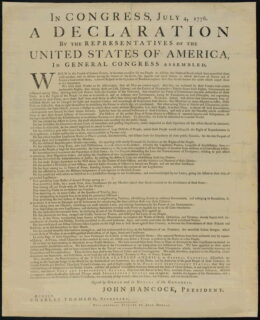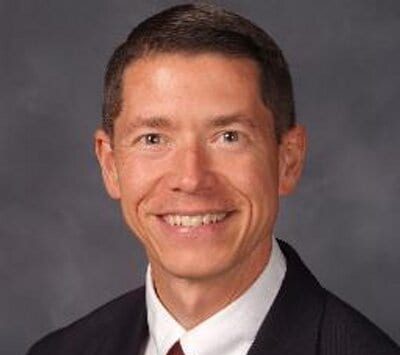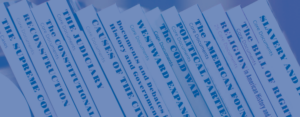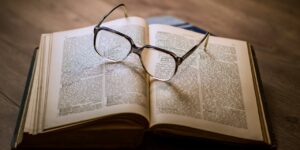
Sean Brennan Leads Bipartisan Reading of the Declaration
On Independence Day, we watched a “bipartisan reading of the Declaration of Independence” organized by legislator and educator Sean Brennan, representative to Ohio’s House of Representatives for District 14. Ohio House members from both sides of the aisle took turns reading the Declaration from its opening, “When in the course of human events,” through its closing pledge of “our lives, our fortunes, and our sacred honor,” along with the names of its signatories. The reading typifies Brennan’s creative approach to public service. It also suggests his effectiveness; Brennan’s colleagues read the Declaration clearly, expressively, and without a stumble.

Brennan, a frequent participant in Teaching American History seminars, has long promoted civic education and civil cooperation at the local and state level. For nearly two decades, he served on the city council of Parma, Ohio’s 7th-largest city. His service included a decade as the at-large elected Parma Council President, a role in which he chaired council deliberations. He carried on this work while teaching government and an elective course in constitutional, civil and criminal law at Brecksville-Broadview High School. “Being on the Council furnished endless lessons for my classes,” he said. At the same time, Brennan’s teaching work allowed him to share the views of a younger generation with the older citizens of Parma.
In 2020, Brennan began bringing local naturalization ceremonies into the high school. He wanted students to understand the careful process through which immigrants become citizens. He involved students in planning school assemblies during which new citizens publicly pledged, as is customary, to “support and defend the Constitution and laws of the United States of America against all enemies, foreign and domestic,” to “bear true faith and allegiance to the same” and to perform military or other service when the law so requires. Prior to the pledge, the school choir sang, a film celebrating the arrival of immigrants at Ellis Island was shown, and prominent local citizens from immigrant families gave speeches about their own experience of becoming American. Before these assemblies, “some students didn’t even know what naturalization was! Now they will never forget,” Brennan said.
These events typify Brennan’s creative approach to public service. As a legislator and educator, he’s spent his career reaching across generational, ethnic, religious, and partisan lines to carry out projects that serve the whole community. He’s often worked with private charities on such projects. A runner, he led in the creation of the annual Parma Run-Walk for Pierogies, which raises money for local scholarships and an all-faith food pantry. As a teacher, he appreciated Teaching American History’s free seminars featuring scholar-led discussion of primary documents. In his teaching he used only primary documents, knowing from his city council experience that they “are the materials you deal with when you are trying to solve political and social problems.” Now, as a full-time legislator, he is “working hard to build trust with my colleagues and to honorably serve the people to the best of my ability.”



